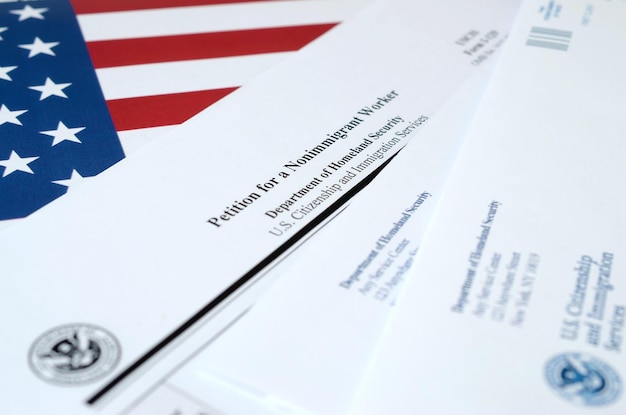Federal Government Initiatives Boost for Small Businesses: Details

The federal government has unveiled new initiatives aimed at bolstering small businesses, including enhanced access to funding, streamlined regulatory processes, and expanded resources for training and development.
The United States federal government has announced a series of new initiatives designed to provide significant support to small businesses across the nation. These initiatives encompass a range of measures aimed at fostering growth, innovation, and resilience within the small business sector. Details Inside.
Federal Government Unveils New Initiatives for Small Businesses
The Biden-Harris administration has rolled out several new programs and policy changes intended to help small businesses thrive in a competitive economic landscape. These initiatives address key challenges faced by small business owners, such as access to capital, regulatory burdens, and workforce development.
Enhanced Access to Funding
One of the primary focuses of the new initiatives is to improve access to funding for small businesses. This includes expanding loan programs, providing grants, and facilitating connections with investors. The goal is to ensure that small businesses have the financial resources they need to start, grow, and innovate.
Streamlined Regulatory Processes
Navigating complex regulations can be a significant burden for small businesses. To address this, the federal government is working to streamline regulatory processes and reduce unnecessary red tape. This includes simplifying compliance requirements, providing clear guidance, and offering online tools to help small businesses stay informed and compliant.

- Small Business Administration (SBA) Loans: The SBA is expanding its loan programs to offer more flexible terms and lower interest rates for small businesses.
- Grant Opportunities: The government is increasing the availability of grant opportunities targeted at specific sectors and demographics within the small business community.
- Investment Tax Credits: New tax incentives are being introduced to encourage investment in small businesses, making it more attractive for investors to provide capital.
- Community Development Financial Institutions (CDFIs): Partnerships with CDFIs are being strengthened to provide additional funding and support to underserved small businesses.
These efforts are designed to make it easier for small businesses to access the capital they need to succeed, ultimately driving economic growth and job creation.
Supporting Workforce Development and Training
A skilled workforce is essential for the success of small businesses. The federal government is investing in workforce development and training programs to help small businesses attract, train, and retain qualified employees. These programs include apprenticeships, on-the-job training, and skills development courses.
These resources are tailored to the specific needs of small businesses, ensuring that they have access to the talent and expertise they need to compete in today’s market. By investing in workforce development, the government aims to foster a more skilled and productive workforce that benefits both small businesses and the economy as a whole.
Apprenticeship Programs
Apprenticeship programs are being expanded to provide small businesses with a pipeline of skilled workers. These programs combine on-the-job training with classroom instruction, allowing workers to earn while they learn.
Skills Development Courses
The government is partnering with educational institutions and training providers to offer skills development courses that are relevant to the needs of small businesses. These courses cover a wide range of topics, including technology, management, and customer service.

- Tax Credits for Training: Small businesses that invest in training their employees may be eligible for tax credits, reducing the cost of workforce development.
- Partnerships with Community Colleges: Community colleges are partnering with small businesses to offer customized training programs that meet their specific needs.
- Online Resources and Tools: The government is providing online resources and tools to help small businesses assess their training needs and develop effective training programs.
The government’s commitment to workforce development underscores its recognition of the critical role that skilled employees play in the success of small businesses.
Reducing Regulatory Burdens for Small Businesses
Complying with regulations can be a time-consuming and costly endeavor for small businesses. The federal government is committed to reducing regulatory burdens and streamlining processes to make it easier for small businesses to operate and grow. This includes conducting regulatory reviews, simplifying compliance requirements, and providing technical assistance.
By reducing regulatory burdens, the government aims to free up resources that small businesses can use to invest in innovation, expansion, and job creation. These efforts are designed to create a more level playing field for small businesses, allowing them to compete more effectively with larger companies.
Regulatory Review Process
The government is conducting a comprehensive review of existing regulations to identify areas where changes can be made to reduce burdens on small businesses. This includes soliciting feedback from small business owners and stakeholders.
Simplified Compliance Requirements
Compliance requirements are being simplified and clarified to make it easier for small businesses to understand and comply with regulations. This includes providing plain-language guidance and online tools.
- One-Stop Shop for Regulations: The government is creating a one-stop shop where small businesses can access information about all relevant regulations in one place.
- Technical Assistance Programs: Technical assistance programs are being expanded to provide small businesses with personalized support in navigating regulatory requirements.
- Regulatory Flexibility: The government is exploring ways to provide greater regulatory flexibility for small businesses, allowing them to tailor their compliance efforts to their specific circumstances.
The focus on reducing regulatory burdens is a testament to the government’s understanding of the challenges that small businesses face in navigating the regulatory landscape.
Promoting Innovation and Technology Adoption
In today’s rapidly changing world, innovation and technology adoption are essential for small businesses to stay competitive. The federal government is promoting innovation and technology adoption by providing resources, incentives, and support for small businesses to invest in new technologies and processes.
These efforts are designed to help small businesses embrace digital transformation, improve their efficiency, and reach new markets. By fostering a culture of innovation, the government aims to ensure that small businesses remain at the forefront of technological advancements.
Technology Grants and Tax Credits
The government is offering technology grants and tax credits to encourage small businesses to invest in new technologies, such as cloud computing, cybersecurity, and data analytics.
Incubator and Accelerator Programs
Incubator and accelerator programs are being expanded to provide small businesses with access to mentorship, resources, and funding to help them develop and commercialize new products and services.
- Partnerships with Research Institutions: The government is facilitating partnerships between small businesses and research institutions to foster collaboration and technology transfer.
- Digital Literacy Training: Digital literacy training programs are being offered to help small business owners and employees develop the skills they need to use new technologies effectively.
- Cybersecurity Resources: The government is providing resources and tools to help small businesses protect themselves against cyber threats.
The commitment to promoting innovation and technology adoption reflects the government’s recognition of the transformative potential of technology for small businesses.
Supporting Small Business Exports
Expanding into international markets can be a significant growth opportunity for small businesses. The federal government is supporting small business exports by providing resources, training, and financing to help small businesses reach new customers around the world.
These efforts are designed to reduce the barriers to exporting, such as navigating foreign regulations and securing financing. By supporting small business exports, the government aims to create new jobs and boost economic growth in the United States.
Export Assistance Programs
The government offers a range of export assistance programs, including counseling, market research, and trade missions, to help small businesses identify and pursue export opportunities.
Export Financing
Export financing is available to help small businesses cover the costs of exporting, such as shipping, insurance, and marketing. These programs are designed to make it easier for small businesses to compete in the global marketplace.
- Trade Agreements: The government is working to negotiate trade agreements that reduce barriers to trade and create new opportunities for small business exports.
- Export Training Programs: Export training programs are being offered to help small business owners and employees develop the skills they need to succeed in international markets.
- Online Resources for Exporters: The government is providing online resources to help small businesses navigate the complexities of exporting.
The focus on supporting small business exports underscores the government’s belief that small businesses can play a key role in driving international trade and economic growth.
Measuring Success and Ensuring Accountability
To ensure that the new initiatives are effective, the federal government is committed to measuring success and ensuring accountability. This includes tracking key performance indicators, conducting evaluations, and soliciting feedback from small business owners and stakeholders.
By monitoring the impact of the initiatives, the government can make adjustments and improvements as needed to maximize their effectiveness. This commitment to accountability demonstrates the government’s dedication to supporting small businesses in a meaningful and sustainable way.
Key Performance Indicators (KPIs)
The government is tracking KPIs such as the number of small businesses receiving assistance, the amount of funding provided, and the number of jobs created.
Evaluation Studies
Evaluation studies are being conducted to assess the impact of the initiatives on small business growth, innovation, and job creation. These studies will provide valuable insights into what is working well and where improvements can be made.
- Stakeholder Feedback: The government is soliciting feedback from small business owners, industry associations, and other stakeholders to inform the design and implementation of the initiatives.
- Transparency and Reporting: The government is committed to transparency and will regularly report on the progress of the initiatives.
- Continuous Improvement: The government is committed to continuous improvement and will use data and feedback to make ongoing adjustments to the initiatives.
The emphasis on measuring success and ensuring accountability reflects the government’s commitment to using evidence-based policymaking to support small businesses.
| Key Point | Brief Description |
|---|---|
| 💰 Funding Access | Expanded loan programs and grant opportunities for small businesses. |
| ⚙️ Regulatory Relief | Simplified compliance and reduced regulatory burdens. |
| 🚀 Innovation Support | Incentives and resources for technology adoption. |
| 🌎 Export Assistance | Support for small businesses expanding into international markets. |
Frequently Asked Questions
▼
The primary goals are to boost small business growth, reduce regulatory burdens, and promote innovation and technology adoption among small enterprises.
▼
Small businesses can access funding through SBA loan programs, grant opportunities, and strengthened partnerships with Community Development Financial Institutions (CDFIs).
▼
The government is conducting regulatory reviews, simplifying compliance requirements, and providing technical assistance to help small businesses navigate regulations.
▼
Yes, technology grants, tax credits, and partnerships with research institutions are being offered to support technology adoption among small businesses.
▼
Export assistance programs, export financing, and trade agreements are available to support small businesses in expanding into international markets.
Conclusion
The federal government’s new initiatives represent a significant commitment to supporting small businesses across the United States. By addressing key challenges such as access to funding, regulatory burdens, workforce development, and technology adoption, these initiatives aim to foster a thriving small business sector that drives economic growth and creates jobs. Small business owners are encouraged to explore these resources and take advantage of the opportunities available to them.





